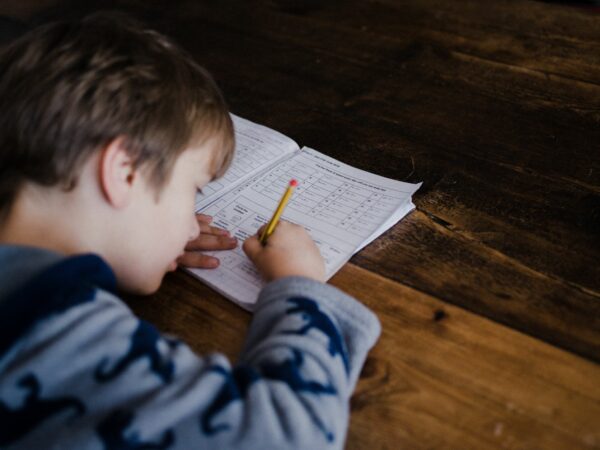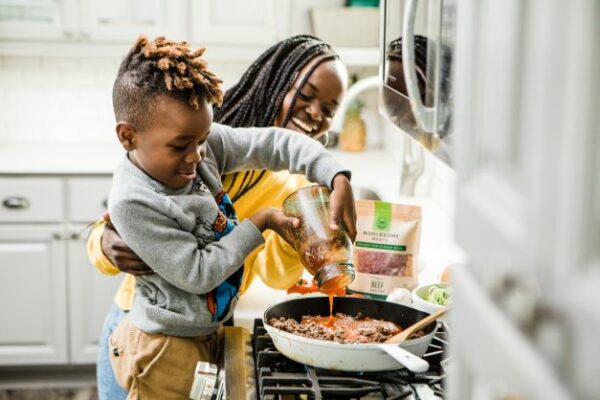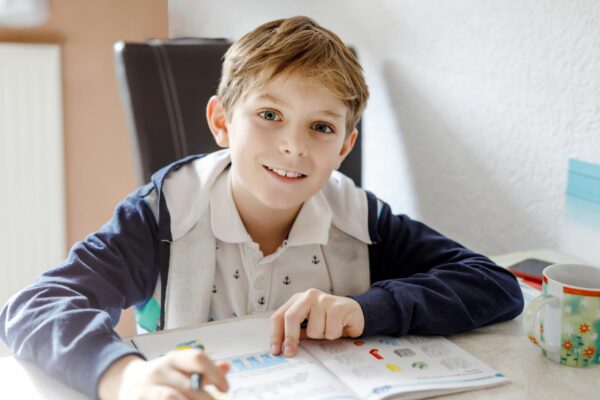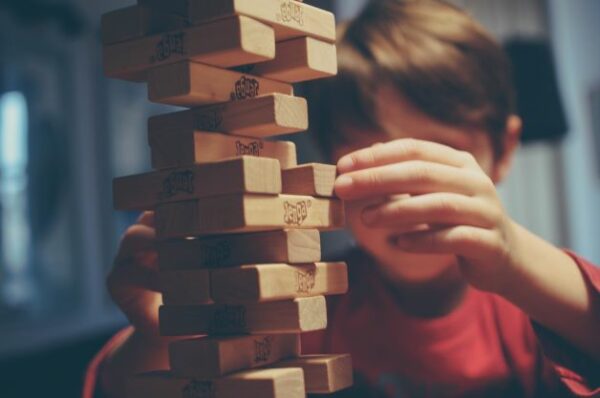Help your child build maths skills
You can support your growing son’s learning by giving him opportunities to talk about and use mathematics. He will begin to link maths with everyday activities such as catching public transport, working out discounts, saving, and cooking.

Speaking positively about maths helps your child value it. If your maths experiences at school were less than ideal, try not to make comments like, ‘I was bad at maths at school.’ Statements like these can lower your child’s expectations of themselves. People being good or bad at maths is a myth that can be easily perpetuated.
On the flip-side, if you succeeded at maths in school, avoid providing answers and solutions. Instead, ask your child to talk about how he might work out maths problems. This can help increase his confidence and deepen his understanding.
Maths in 2021 is not about rote learning. Today, students know that there are many ways to get an answer. It is important to be able to explain how and why they selected the approach they did.
There are many activities that you can do at home to explore maths with your son. It is not important that your child can do these quickly. Expecting your child to work quickly on maths can cause maths anxiety. Try to focus on the strategy and not just getting the right answer.
Outdoors

- Go on a number walk, to look for shapes or numbers, to count things, to compare sizes of objects and look for patterns in the environment.
- Get your child to help pack for a trip or help loading the car boot. What will fit?
- Measure everything! ‘How far can you leap?’ ‘How long is the hall?’ ‘How tall are you?’ ‘How tall is the cat?’ ‘How many times can you bounce the ball without fumbling?’
- Compare paces, steps and hand spans with metric units such as centimetres or metres.
- Find and read out big numbers in the local area.
- Explore online maps, set directions for planning a trip.
- Look at local building designs: shapes, size, symmetry, patterns and scale.
- Read house prices in real estate agents’ windows.
- When driving, spot number plates with the number zero on them. Change the number to 1. Work up to the number 9. Spot number plates with digits that equal 10, 20, 55, 17 using + – x or ÷.
Cooking

- Cut sandwiches and cakes in half: ‘Can you cut it in half a different way?’
- Investigate the units of measurement for things in the cupboard or fridge.
- Get your child to help measure liquids suing cordials or making smoothies.
- Get your son to estimate how much an item weighs, then see how close his estimates are.
- Double a recipe that serves 2 so that it serves 4 people. How much of each ingredient will you need? Try other ratios to add a level of challenge.
- Have a go at being a junior Masterchef by reading recipes, measuring ingredients, calculating cooking time, and serving even portions.
Travel
- Get your child to mark important dates on a calendar.
- Use a stop watch or elapsed time to work out how long does it takes to travel to school.
- Estimate how far you’ve travelled, the distance to your destination, and how long it is going to take.
- Find the arrival time when travelling by car or using public transport, for example, if it is 1.28 pm now and it will take us 25 minutes to get there, what time will we arrive?
- Get your child to set dates in a digital calendar and get familiar with setting alarms and reminders.
- Read public transport maps and follow along locating each stop or station.
Reading

- Describe the location of Wally in a Where’s Wally book. Find the most common letter on a page in your book.
- Draw a map or create a timeline based on the story they are reading.
- Explore infographics and data displays on TV, blogs or in magazines.
Games and sports
- Investigate scoring in football and other sports. What are the patterns?
- Enjoy jigsaw puzzles and discuss different approaches such as colour matching, shape, etc.
- Vary the rules of common games different such as cards, cricket or dominoes.
- Record results as lists, tables, graphs or other forms of records.
- Copy your team’s logo, then scale it to twice the size.
- Identify the strategies that help you win at different games, such as noughts and crosses, or Yahtzee.
- Investigate Fitbit information.
- Try Geocaching.
- Explore how percentages are calculated to decide sports ladders.

Shopping
- Estimate the total cost of a supermarket shop.
- Estimate then weigh the vegetables and fruit.
- Discuss if a product on ‘special’ is really a big saving.
- Compare unit prices to find the best value for money between different brands of the same item, then different sizes of the same item.
- Find how many oranges/mandarins will weigh a kilogram.
- Play games with shopping brochures to see how many items your son can buy with a set amount.
- Unfold 3D packages to create a two-dimensional net.
More opportunities
- Make rhythm patterns by drumming, clapping, stomping, dancing or tapping.
- Investigate time spans, such as seconds in a day, days in a week, decades in a century.
- When you need to head to the hardware store ask ‘what needs replacing?’ ‘How much material do we need?’ ‘Can you write a list for me?’
- Make their own spirographs tips patterns by repeatedly tracing around a shape.
- Explore mathematics in art; e.g., Escher, perspective, patterns, colour.
- Explore how colour works in digital photography.
- Read and interpret information displays such as timers and clocks, traffic signals, maps, thermostats, graphs, meters and odometers.
- Construct a Lego model, then draw it from different perspectives, such as top, front or sides.
Have fun exploring more maths ideas together!
Brought to you by Brighton Grammar School
Brent Brickhill is an Instructional Coach and Numeracy and Mathematics Specialist (ELC – Year 4) at Brighton Grammar, an all-boys school in Melbourne. This article is about EducationYOU MAY ALSO ENJOY
Subscribe to Understanding Boys. It’s free!
Got boys? Sign up for tips and advice you'll actually use.

